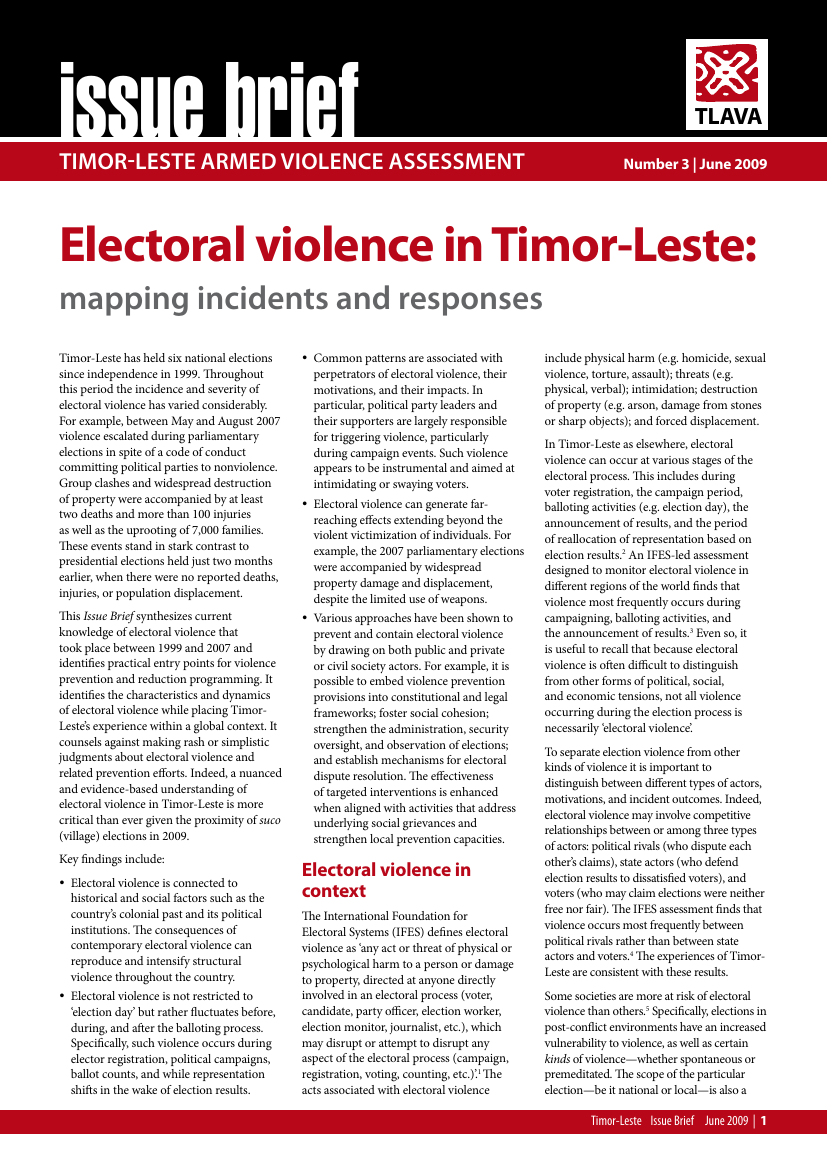
Electoral violence in Timor-Leste: Mapping incidents and responses (TLAVA Issue Brief 3)
Timor-Leste has held six national elections since independence in 1999. Throughout this period the incidence and severity of electoral violence has varied considerably. For example, between May and August 2007 violence escalated during parliamentary elections in spite of a code of conduct committing political parties to nonviolence. Group clashes and widespread destruction of property were accompanied by at least two deaths and more than 100 injuries as well as the uprooting of 7,000 families. These events stand in stark contrast to presidential elections held just two months earlier, when there were no reported deaths, injuries, or population displacement.
Electoral violence in Timor-Leste: Mapping incidents and responses synthesizes current knowledge of electoral violence that took place between 1999 and 2007 and identifies practical entry points for violence prevention and reduction programming. It identifies the characteristics and dynamics of electoral violence while placing TimorLeste’s experience within a global context. It counsels against making rash or simplistic judgments about electoral violence and related prevention efforts. Indeed, a nuanced and evidence-based understanding of electoral violence in Timor-Leste is more critical than ever given the proximity of suco (village) elections in 2009.
Also available in TETUM.
Have your say about Small Arms Survey publications and products: take 5 minutes to fill out our questionnaire.